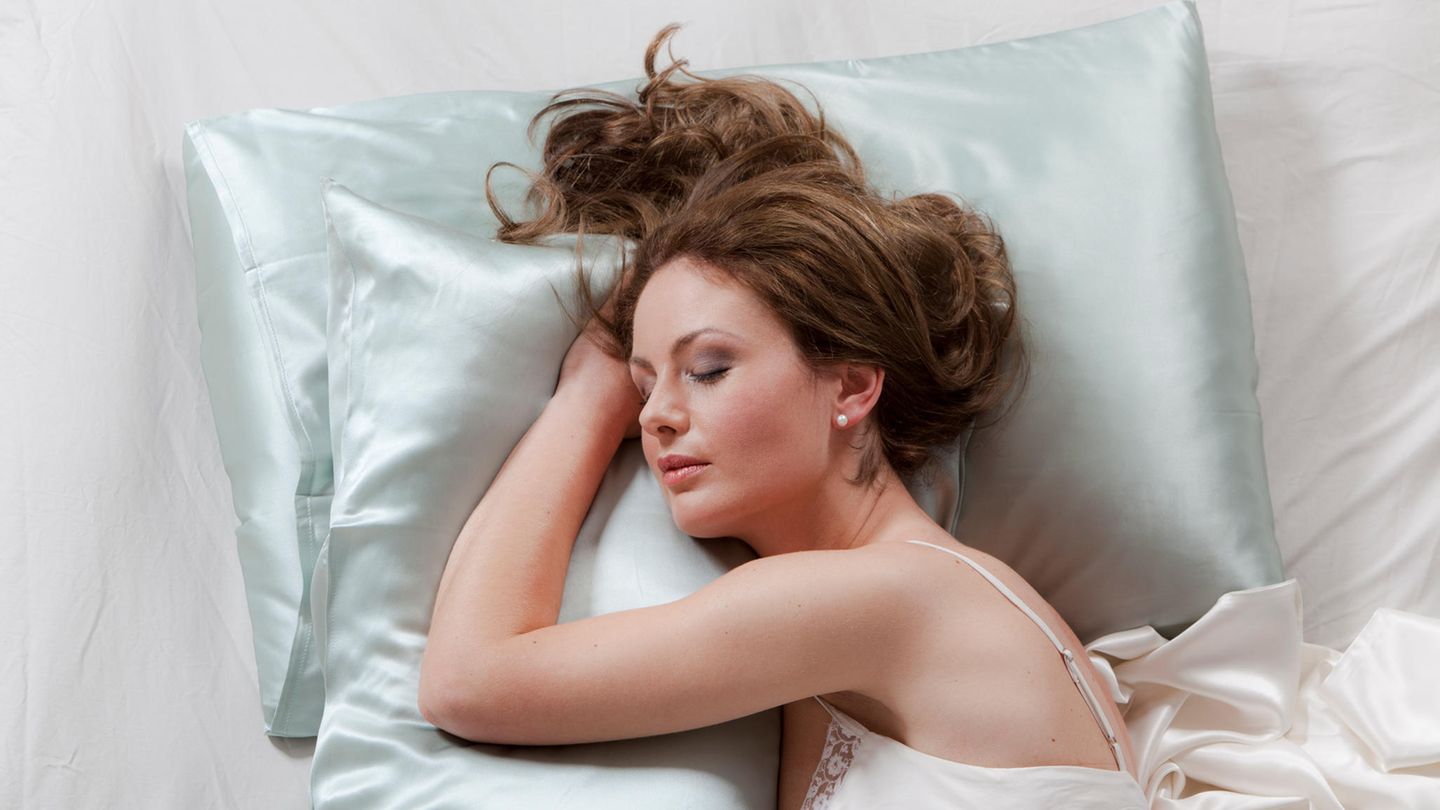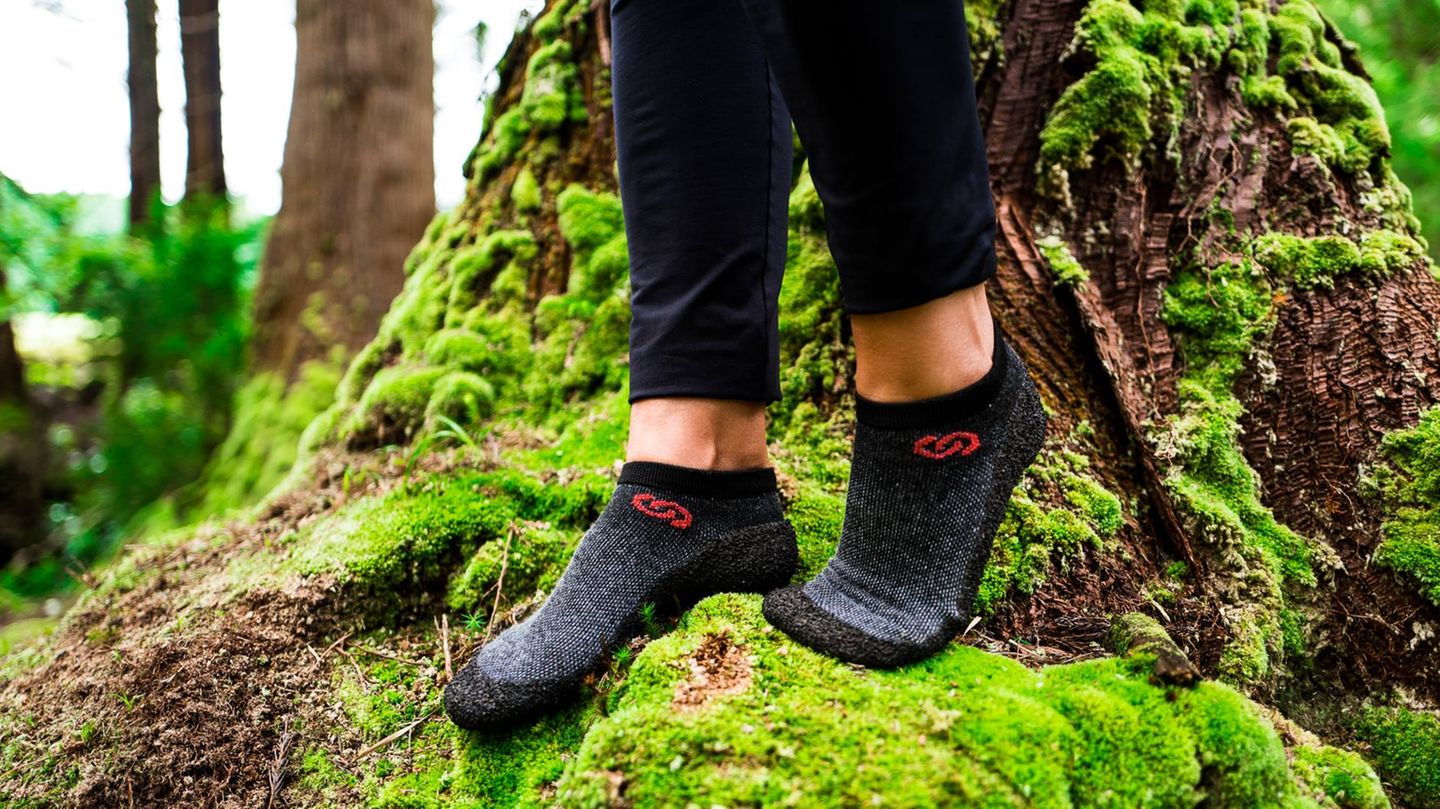Fact check
Can a silk cushion really counter fold, split and fracture of hair?
Copy the current link
Add to the memorial list
Trends come and go trends. We couldn’t avoid asking what was behind the hype about silk pillows. Do you really help against broken hair?
The idea is not new, but modern: silk pillows are currently very trendy. However, not whether your -looking optics. Rather, it is about the high -quality materials to counteract split and hair breakage. Many manufacturers even advertise that their products can reduce wrinkles on their face – but how do you get such an idea? Is it just a clever marketing campaign or does silk really have a positive effect on our body? Two theories:
1. Theory: Move silk cushions to fold fold
Silk is a natural material that is produced by caterpillars. More specifically, it is their cocoons in which their larvae pupate from which the fine fibers are obtained. Their structure as well as the pH value should be quite similar to our skin and hair, which is certainly a reason why the pillows have triggered a new beauty trend. But back to the silk: it is not only hyperallergenic, but also dismisses house dust mites. This makes them very attractive for allergy sufferers and asthmatics. But is that why she also helps against wrinkles? The idea is based on the fact that the natural fibers (in contrast to cotton or polyester) are less absorbent. Which in turn should lead to the skin on a less moisture is withdrawn. In addition, the smooth surface is less “crumpled” your skin and thus favors less wrinkles. That sounds logical in itself, but it is questionable how to prove whether a can actually slow down the wrinkle formation? You would probably have to test that for years.
2. Theory: silk cushions reduce spliss
Cotton is rougher as a silk, which inevitably means that our hair is loaded significantly more when sleeping on “coarse” material. And they are more susceptible to split off. On the other hand, you use a which has a structure similar to our hair, the lower friction between the scalp and cover should provide less hair breakage. This is made possible by the smooth surface, through which your hair should literally slide – and therefore less knot or matt. For the same reason too advertised because they have a similar effect to silk pillows. So much for the theory. We think it is possible that the fine fibers can have a positive effect on our hair. However, every person (and also his hair structure) is different, so the effect cannot and will not be the same for everyone. To find out, only one thing helps here: just try it out. Perhaps the pillow turns out to be the ultimate miracle cure for split and hair breakage. Or you will not find any difference to ordinary covers.
The fact is that there is no scientific evidence for the effect of silk pillows. However, there is no question that silk fibers (especially in summer) have a cooling effect on our skin. And thereby sweat them less in their sleep. So the investment would not be in vain.
Tip: How to clean silk pillows correctly
Silk is particularly sensitive to high temperatures, so you should definitely take the following tips into it when washing:
- You can find out whether a silk pillow is suitable for the washing machine at all in the sewn -in care label. There is also the recommended temperature that you can use for cleaning.
- Do not use ordinary detergent, but a liquid For sensitive textiles – such as silk. It was specially developed for low temperatures.
- Protect a silk cushion from other textile that is washed by it by doing it in a fine mesh in front of each wash cycle (including zipper).
- Set a gentle rash. Modern washing machines have an extra function for sensitive materials such as silk. Also make sure that silk cushions are not thrown heavily.
- Withdraw the residual moisture with a dry and clean towel after washing. Never put a silk pillow in the dryer because it does not withstand the temperatures.
- Fill lukewarm water that is not hotter than 30 degrees, into a bucket (alternatively the sink also goes).
- Put some fine detergents for sensitive textiles in the water and briefly distribute it with your fingers.
- Add the silk pillow for a few minutes before you dive through the water with gentle movements.
- Exchange the dirty water for fresh (lukewarm) and rinse the silk pillow thoroughly.
- Pull the moisture out of the covers by placing a clean towel on it and pressing it lightly.
- Place or hang the silk pillow on a laundry rack in a non -sunny place until it is completely dry.
*This article contains so-called affiliate links to products in online shops. If a user clicks on it and buys something, the publisher receives a commission from the dealer, not from the manufacturer. Of course, where and when you buy a product is up to you.
Source: Stern
I’m Caroline, a journalist and author for 24 Hours Worlds. I specialize in health-related news and stories, bringing real-world impact to readers across the globe. With my experience in journalism and writing in both print and online formats, I strive to provide reliable information that resonates with audiences from all walks of life.




